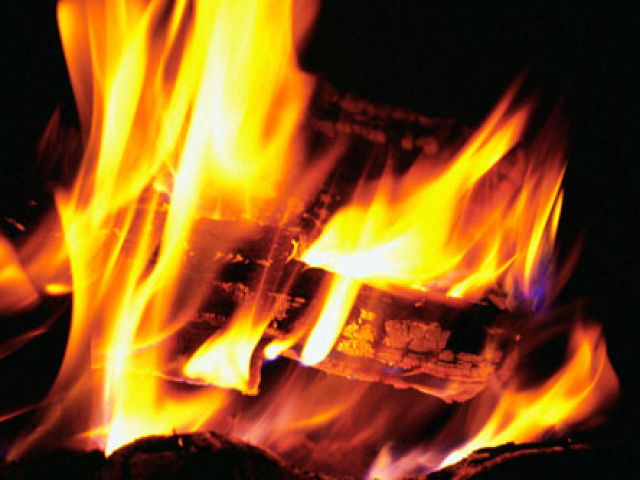The Nestinarstvo Phenomenon
 The Nestinarstvo Phenomenon
The Nestinarstvo Phenomenon
Nestinarstvo is a unique, almost unknown phenomenon, an enigma representing a tiny fragment of the Bulgarian cultural heritage. The ritual of the dance on embers (today often commercialized) is only a facet of an intricate complex, in which the central position belongs to the never-changing values of the human spirit and the eternal search for happiness.
The ability of establishing a contact with the saint patrons and the ancestors in states of trance and dream visions is the most important characteristic of Nestinarstvo. The final expression of that ability - the dance on embers - is a typical, but not a constant component of the ritual. The prophecies usually deal with the fate of the village, state, and people's future. Nestinars have always been righteous people with a prophetic gift. That is why they have always received the deep respect of the whole community.
The skill to walk on embers (without being burnt!) is a most impressive and important one. Some medical specialists have observed that the skin of the nestinars' feet is very delicate, without calluses. Despite the different duration of the dances on embers (not less than 10 min.), the nestinars' feet remain intact, without a slight trace of burning. It has been proven that calluses are not a protection because often some nestinars "bury" their feet ankle-deep in the embers. There exists some psychological theories of the observed phenomenon, but they do not provide satisfactory explanations.
Another curious fact is that during the dance, some objects dropped by the nestinars (handkerchiefs, clothes, etc.) do not burn. Some people have witnessed cases in which the nestinars sit on the embers, and even lie on them.
Many scientists are absolutely positive that at temperatures above 70°C human proteins denaturalize. The temperature of the embers is minimum 400°C. Specialists also consider that the nestinars' peculiar psychic state can explain the insensitivity to pain, but not the lack of burn damages. It is accepted without any surprise or bewilderment by nestinars and their fellow villagers. Miracles are something phenomenal to them, but at the same time natural from the point of view of folklore mentality and an inevitable manifestation of charisma. Nestinars treat their skill as a gift, and are deeply convinced that their power comes from their unhesitant faith and trust in the saint patrons.
Nestinarstvo is a unique phenomenon, which still remains veiled; a mystery posing many unanswered questions.
The Ritual
In Strandzha Mountain, the celebration ritual begins in the Sunday before St. Constantine and Helena's Day. On the Thursday before the 3rd and 4th of June, the nestinars celebrate the so-called "Little Constantine".
The morning starts with the "dressing" of the nestinar icons (the so-called "tail-end kunizmi/kumizmi"), after they have been taken to the "konak". The "dressing" ritual includes the following steps: first, the "icons' shirts" are annointed by the chief priestess, then they are handed to the "vikilin" who puts them on the icons. Once the icons "have been dressed", they are "ready to head for the holy spring" in a solemn procession. There they are "bathed" – and are cleaned with the holy water of the "ayasma". "Horo" dances are played, songs are sung and ritual breads are served.
At noon the stacking of the nestinar fire begins. In line with some old records, nestinars did not start the dance until twelve carts of wood had not been burnt. Now the quantity of wood used is dramatically less.
At dusk the culmination of the nestinar complex ensues. The nestinars (later the only female nestinar) go to St. Constantine and Helena's "konak". There praying in front of the icons of the two saints, they breathe in the smoke of burning incense. When darkness descends upon the earth all the villagers gather, the musicians come and the procession heads for the fire. They walk in the following order:leading is the churchwarden, followed by the boys who carry the icons, then, the nestinars, the musicians, and finally the spectators. After they arrive at the fire, they form a cordon, encircling the already- spread embers. The "nestinar obsession" reaches its peak. With whoops and shouts the nestinars get onto the embers. First they always trace a cross. After that they walk at random. The nestinar way of walking on embers is particularly strange. They call it "treading" ("pleshtene"/"tipane"- Old Bulgarian), because the steps are short, even, moderately fast, and on the whole length of feet. When the ceremony reaches a fever pitch, the nestinars grab the icons, get onto the embers, make their prophecies, or take a handful from the embers and strew them over their heads. The dance on embers is usually followed by a common "horo" dance, led by the "vikilin". They play it in the hope of having health and happiness in the future.
As an old nestinar once said: “Do not ask questions. Simply watch and believe.”
read more articles
